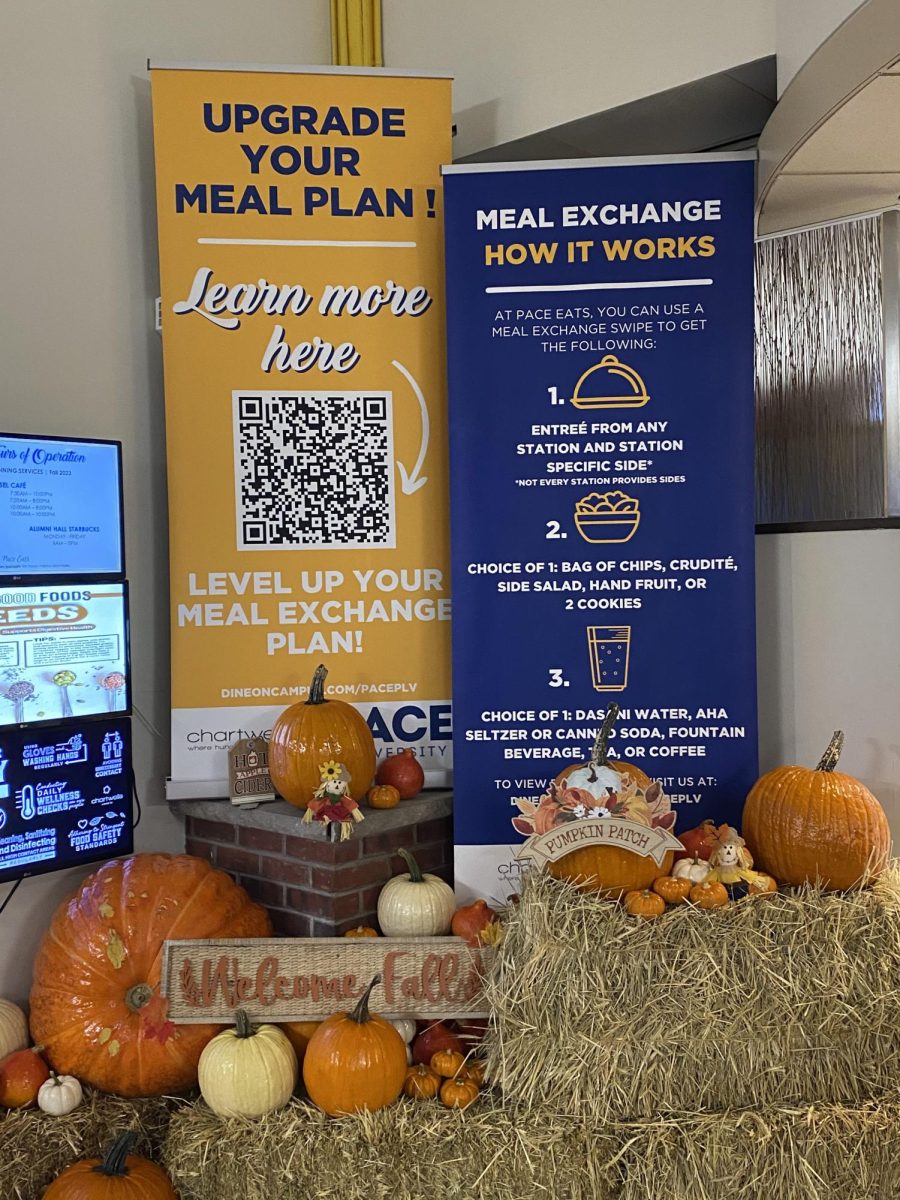With the start of the 2023 academic year, Chartwells has rolled out a new meal plan for first-year residential students at Pace University. It’s name is the Setters 10 Plan. It features 10 swipes a week, with an additional 545 dollars of declining balance and 55 dollars for flex. The inclusion of a swipe system is something that has been used in other universities, but this is the first time we have seen it at Pace. So what exactly are swipes?
While it does vary from university to university, swipes essentially represent how many times a student can enter and exit the dining hall with a meal. This means those with the Setters 10 meal plan are able to do this 10 times a week, resetting every Sunday.
What is most important to note about the swipes is that a student cannot use them for any purchase they would like. There is a specific set of food items a student can get to be eligible for a meal exchange swipe.
An acceptable swipe must include:
1: An entreé from any station, with a station-specific side
2: A choice of a bag of chips, crudité, side salad, hand fruit, or two cookies
3: A choice of Dasani water, AHA Seltzer, canned soda, fountain beverage, tea, or coffee.
A student will be able to use a swipe if they meet all these criteria. However, if a student were to get a Smart Water instead of Dasani for example, they would not be able to swipe.
Clifford Mondesir is the executive director of Auxiliary Services. He explained the thought process for the inclusion of this system.
“The New Meal Exchange Program was in part a response to global food insecurity concerns. The concept was derived from benchmarking, industry trends, and internal collaboration with various students and administrative areas,” Mondesir said.
Mondesir had proposed the idea for a meal exchange system in February last semester when he was brought in as a guest speaker at a senate meeting for the Student Government Association (SGA). His plan was to have it implemented for the next semester, which ended up being the case.
“Most schools have had meal swipe or board plans for years,” said Mondesir. “…and we’ve incorporated aspects that we believe tackle various concerns around food insecurity that are affecting universities nationwide and one of the aspects was the implementation of this program.”
Mondesir continued, “After forming a committee to review challenges facing our students, the program was not only designed to assist with food insecurity, but to provide students with ‘more food per meal’ at a lower cost to them, and to help them budget their dining dollars.”
“Before adopting the plan, Auxiliary met with students on each campus, last spring they distributed a formal survey to students and even visited a local institution to see it working in real-time.”
A lot of planning went into making this swipe system a reality. However, freshmen are having trouble with the specificity of what they have to buy. With the limited variety of choices, it is easy for freshmen to get confused.
Nick Aramburu, a freshman at Pace University, described the difficulty he has had with the system.
“In general the sides are extremely limited,” Aramburu said. It would be so much better if I could just choose which sides I’d like. It would be more expensive to buy all the items separately, so there is that benefit. But other than that, the selection is very small, and you end up being stuck with stuff you don’t want to eat.”
Freshmen are also finding it to have a repetitive nature, gravitating to the same options each time. What they want for a swipe system is more choices, leading to more variety in what they eat.
“I guess if I had to say anything about the swipe system it would be that it’s way too limited”, said freshman Dylan Paczkowski. “We can’t just keep eating the same things over and over again.”
What students wish had been done differently is the amount of transparency about the new plan. Many of the details and specifics of the plan came off as vague to many freshmen, leading to a lot of confusion. Especially at the beginning of the semester.
“The idea is good,” said freshman Silas Warren. “I think they could have incorporated it better since apparently no one knew how it worked so a ton of freshmen were down a lot of declining balance so early in the year.”
he Setter 10 plan seems to be off to a rough start to the first-year students. But this is just the start, and there is a lot of room for improvement. Mondesir noted that Auxiliaries is committed to getting feedback, and will improve the program as time goes on. They will look into what went well this semester, and what can be done differently for the future.

